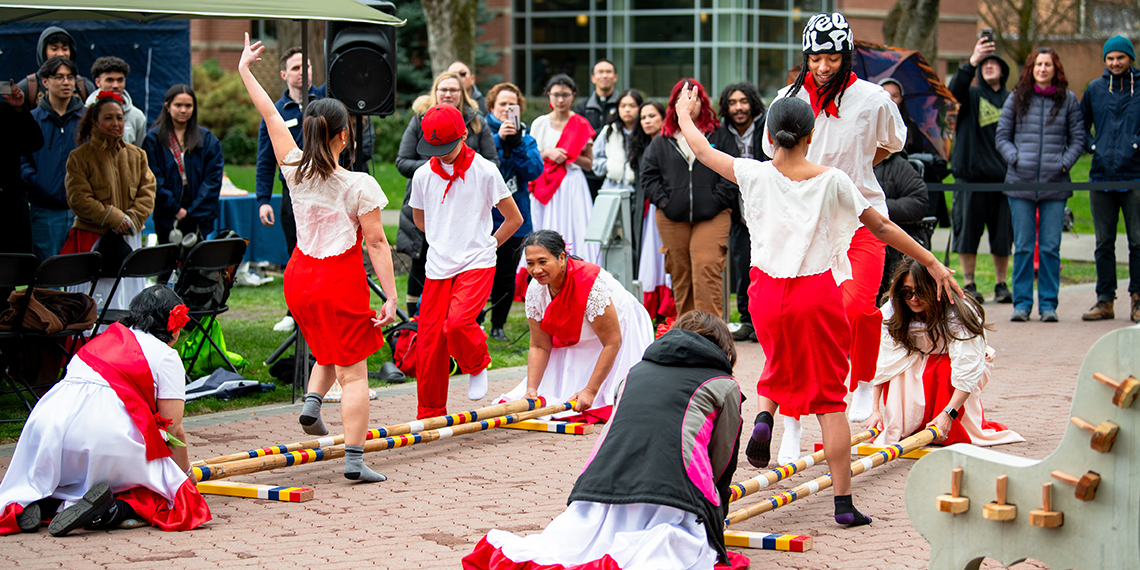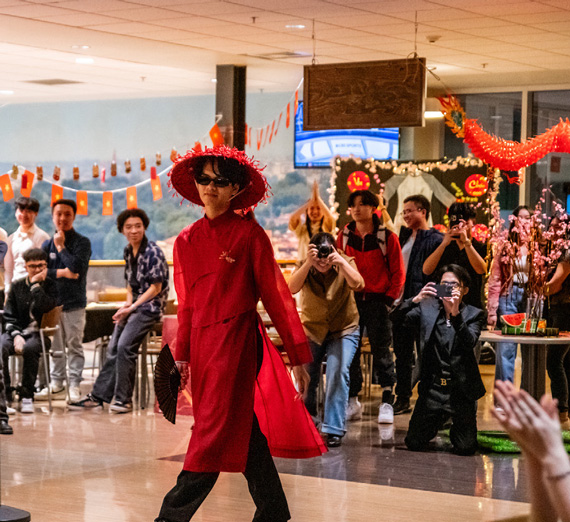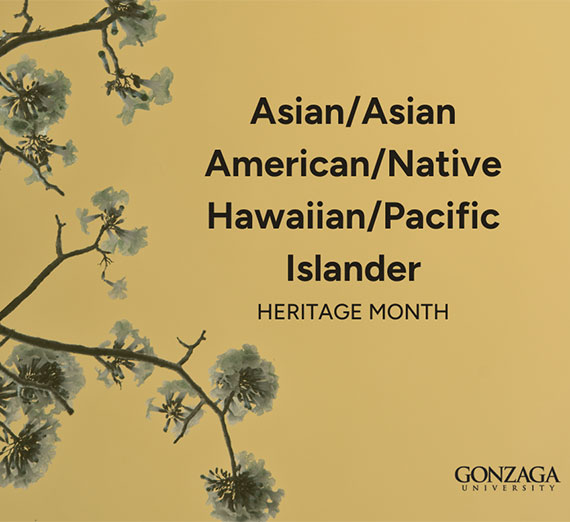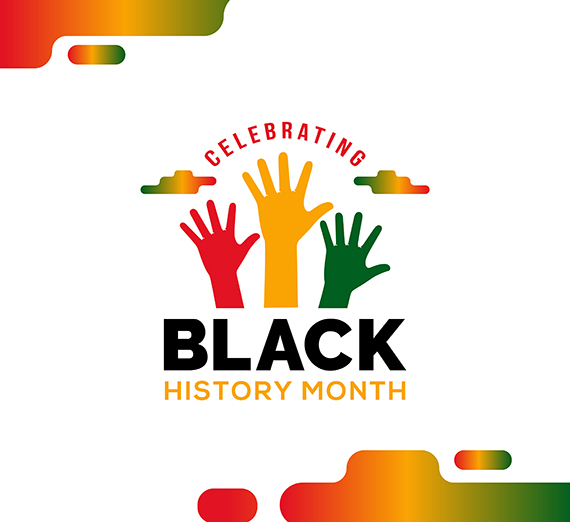"Let's Rest Together"
Bench named for Filipino advocate who attended GU

Philip Vera Cruz’s stint at Gonzaga was a brief one, back in 1931. But, thanks to fellow Asian American students attending nearly a century later, the recognition of his contributions to improved conditions for laborers lives on.
Vera Cruz was part of the “Manong generation,” one of the first waves of Filipino migrant workers who came to the U.S. in search of better opportunities, only to face racial discrimination, oppressive labor practices, anti-miscegenation laws and deplorable living conditions, shares Joan Iva Fawcett, Filipino American and dean for Social Justice Leadership & Community Empowerment at GU.
Fawcett recounted that after withdrawing from Gonzaga due to financial struggles, Vera Cruz was drafted into the U.S. Army during WWII and assigned to the segregated 2nd Filipino Infantry Regiment. He eventually settled in California where he emerged as a labor organizer, co-founding the Agricultural Workers Organizing Committee and merging with others later to form the United Farm Workers, which he served as vice-president for 12 years.
At a gathering around a bench behind College Hall on Bulldog Alley, Fawcett reported more about the disagreements among labor organizers, including Vera Cruz and Cesar Chavez. “I share this dissension, not to throw shade at one labor organizer over another, but rather to emphasize the importance of solidarity and the challenges of sustaining that solidarity over time, especially in our increasingly polarized world where in-fighting occurs regularly,” she said.
“Vera Cruz believed that movements should not be limited by their leaders,” adds Tia Moua (’23), a former student leader at Gonzaga who is now the community engagement organizer for Asians for Collective Liberation in Spokane. “I admire the way [he] saw how everyone’s liberation is intertwined. He recognized everyone’s shared struggles and the need to fight alongside each other to build collective power for successful movements.”
Vera Cruz remained active in labor and social justice issues until his death at age 89. In 1987, he received the Ninoy M. Aquino award and visited his homeland, reuniting with his family after 60 years abroad.
Fast forward a few decades, to when history prof Ray Rast shared the story of Vera Cruz with students. It inspired Ryan Liam ('19) to develop a senior capstone project around the creation of a memorial on campus. COVID-19 hit, and thus that seed never sprouted, until Veta Schlimgen, fellow associate professor of history, in 2022 began teaching a new course, Asian American and Pacific Islander American History.
"I knew about Ryan's project, so when the class addressed 1960s activism, I focused on Vera Cruz and told students about Ryan's still-unfinished project," says Schlimgen. "Tia Moua was in that class. She and other students decided to take up the effort."
Though Moua has since graduated, she and current students, like Andrea Galvin, continued to work to make the memorial reality, Schlimgen adds.
Seated from left to right: Andrea Galvin, Tia Moua, Ryan Liam, Joan Iva Fawcett. Standing: History professors Veta Schlimgen and Ray Rast.
“This bench signifies more than just the life of one man,” Fawcett said to attendees of the dedication. “This memorial serves as a beacon of hope for all non-traditional and marginalized students. As opposed to a statue, the bench itself is significant in that it invites us to pause. Upo muna. Pahinga tayo. ‘Sit down first. Let’s rest together.’ It’s a visual reminder that social justice and solidarity require periods of rest.”
Says Moua, “In a society that forces BIPOC and other marginalized communities to fight against oppression and injustice continuously, rest is an act of resistance."
She continues: “This bench also represents my dream for GU to be a safe, welcoming space for not only Asian Americans but all people who are marginalized. ... I hope students reflect on the legacy of Vera Cruz to inspire them to mobilize in their own communities, through cross-cultural solidarity, to advance justice, equity and inclusion.”
- Diversity & Inclusion
- Arts & Culture
- Student Life
- UMEC
- History
- Gonzaga Magazine





